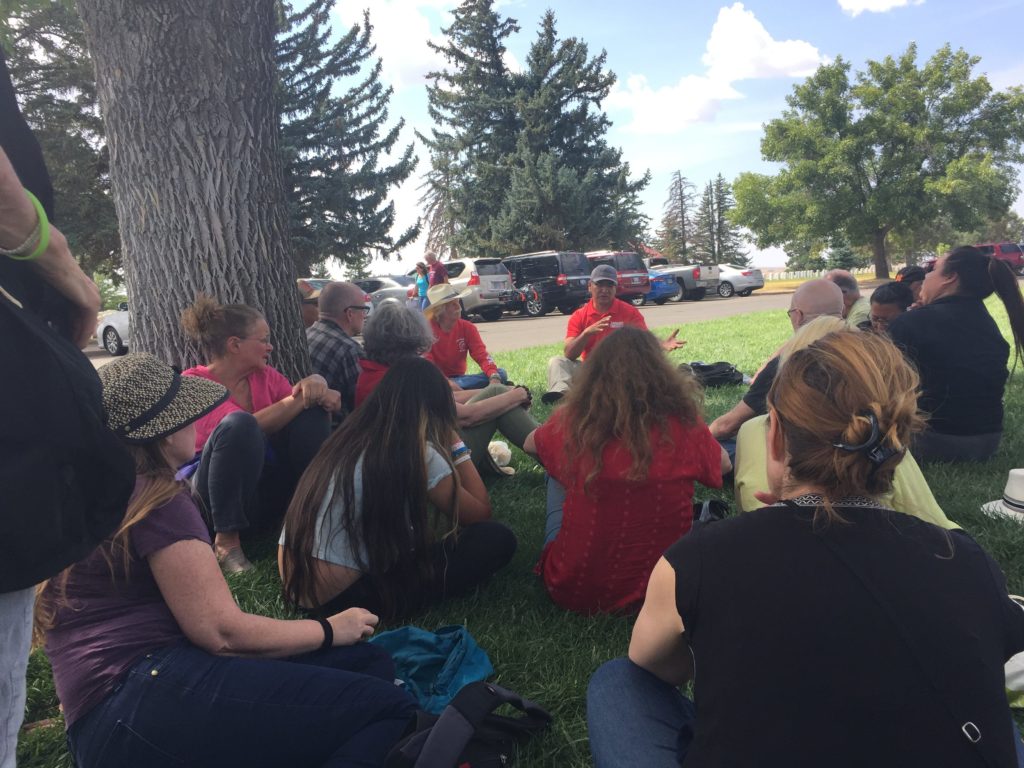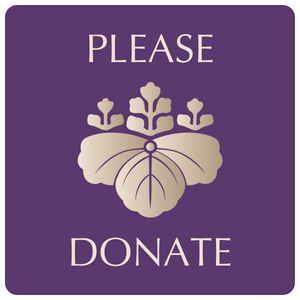Above, Zen Peacemakers and Lakota hosts listen to a tour guide from Crow Nation recount events from the Battle of Little Bighorn
This post was adapted from a dharma talk given by Michel Engu Dobbs at Ocean Zendo in summer 2017.
Reflection
Two weeks ago [the week of August 14, 2017], I went to Rapid City, South Dakota, to participate in a Zen Peacemaker trip to bear witness to the history, lives, suffering, and spirituality of the Lakota. There were about 25 to 30 participants, including our Lakota hosts. We spent six days together in Montana, Wyoming, and South Dakota visiting two significant Lakota historical and spiritual sites-Little Big Horn, and Bear Lodge Butte (Devil’s Tower), and assorted diners and coffee shops in between.
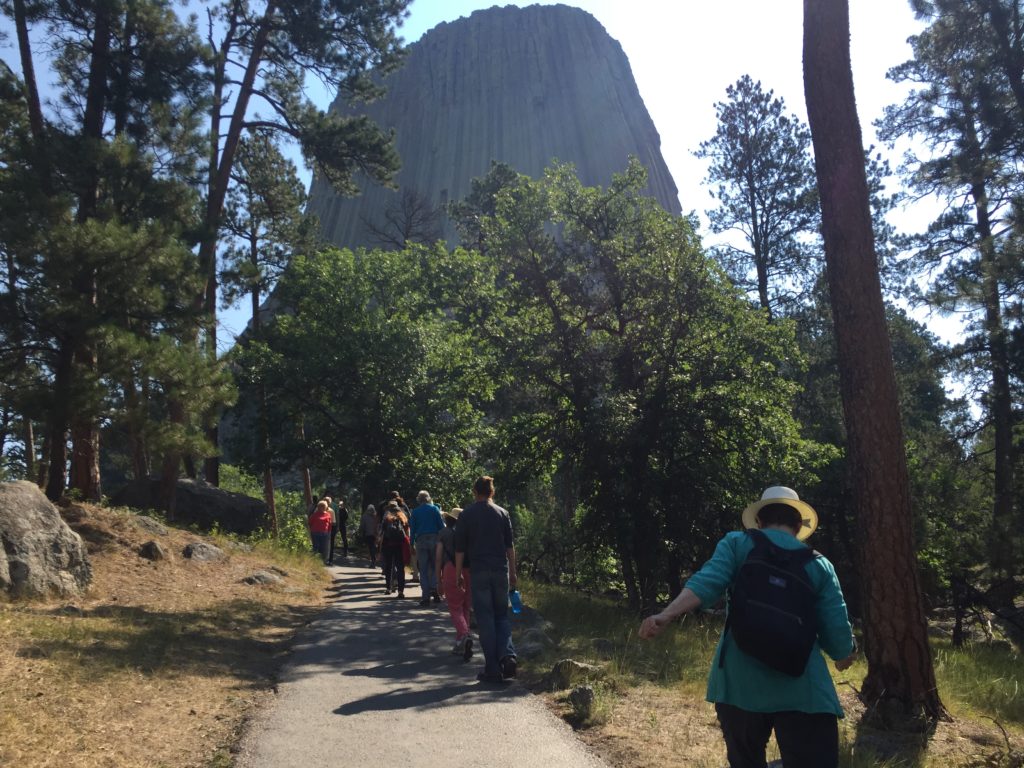
You might wonder what interest a Zen group would have in going to Native American sacred sites. Zen Peacemakers has been doing different Bearing Witness Retreats in places where trauma has occurred and where healing is needed, for the past 22 years. We hope the retreats will contribute, in some way, to this healing. The retreats have taken place in Auschwitz, Rwanda, the Black Hills, and Bosnia, and on the streets of major cities all over the world. In the retreats we practice the Three Tenets of the Zen Peacemakers: Not-Knowing, or giving up fixed ideas about ourselves and the universe; Bearing Witness to the joy and suffering of the world; Taking Action that arises from Not-Knowing and Bearing Witness. We also use council, sitting in a circle and speaking one person at a time to what we are experiencing, and listening.
Just a bit about our hosts, Violet Catches is a grandmother, raising her two granddaughters. She is a well respected traditional healer and native Lakota speaker. Manny Ironhawk is a teacher of Lakota language and traditions, and is involved in many community affairs. When he was contacted by Violet to do this trip, he asked his wife Renee, “What’s a Zen?” Renee was not taught Lakota by her parents. They spoke it but tried to protect and assimilate her by not teaching her the language which they were beaten for speaking as children in boarding school. She works as the Program Coordinator for the Great Plains Partnerships in Improving Community Health for the Cheyenne River Sioux Tribe. The ZPO group was loosely led by Grover Genro Gauntt Roshi, my dharma uncle and a dear friend and teacher. He’s the king of street retreats, and has been traveling out to Pine Ridge for about 18 years, laying the groundwork and making the connections for ZPO that made this retreat possible. He and I were at Standing Rock together in December. The rest of the group was a bunch of beautiful people, interested in spending time together doing this work. They were aged 2 to 70 plus years old, from all over the country and with all different religious backgrounds.
Trauma
Right from the Rapid City airport, I drove alone down to Wounded Knee where there’s a memorial and mass grave for the approximately 300 Lakota who were massacred there in 1890. It’s a very sad place, poorly kept up, and surrounded by ramshackle stands where residents of the impoverished Pine Ridge reservation try to make a buck from the few visiting tourists that go there. Wounded Knee is also where in the 70’s Oglala and AIM (American Indian Movement) activists laid siege to the town to protest against the tribal president, who they said was corrupt, and also against the broken treaties of the US government. In addition it is not far from where two FBI agents were killed in 1975, leading to the– many say –unfair trial and conviction of Leonard Peltier, written about by Peter Matthiessen, my Zen teacher, in his book In the Spirit of Crazy Horse.
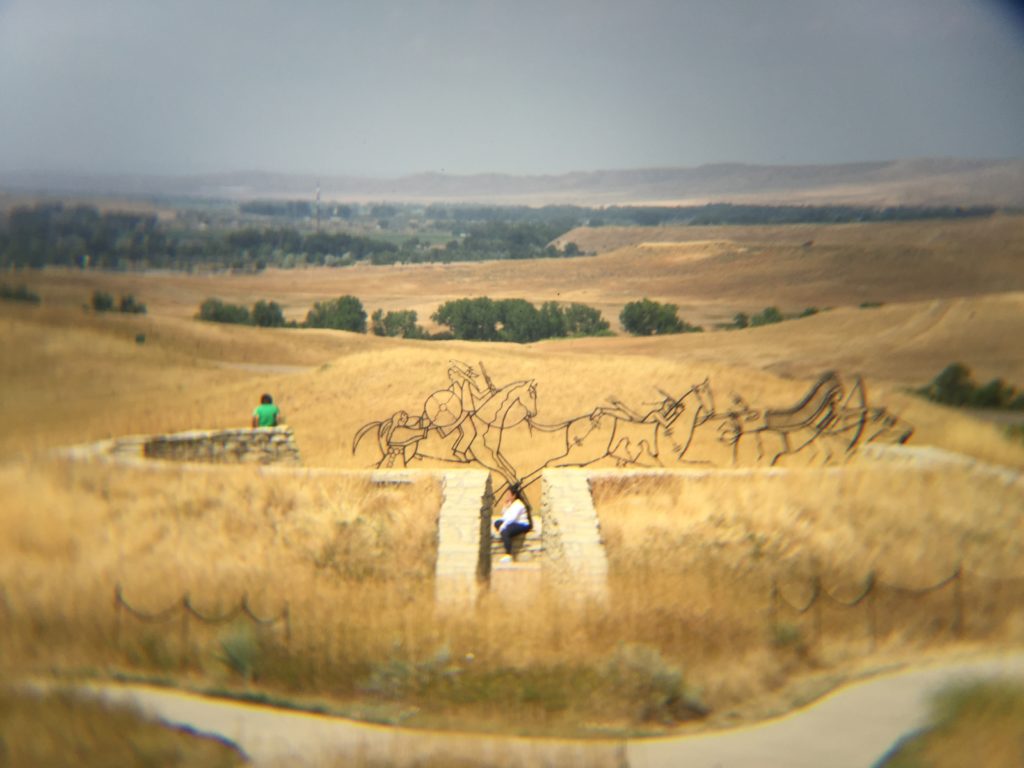
The next morning, I rejoined the group and we drove to the site of the battle of Greasy Grass Creek, or Little Big Horn, fought on June 25, 1876 on the Crow reservation in Montana. We spent two days there. Our hosts were surprisingly solemn at this site, describing that it was sacred land, the traditional site of annual Sun Dance, and the deep practice of preparing for Sun Dance, explaining that the victory by the Lakota, Cheyenne, and Arapaho marked the beginning of the end of their traditional lifestyle.
The American government reacted to the defeat of Colonel GA Custer with severe retribution. More soldiers came and the Lakota were forced to sell their sacred land in the Black Hills “sell or starve” rider to the Indian Appropriations Act of 1876 which cut off all rations for the Sioux until they terminated hostilities and ceded the Black Hills to the United States.
The Agreement of 1877 officially took away Sioux land and permanently established Indian reservations. The religious and cultural persecution of the Lakota included laws which made it illegal to speak their language or practice their religion, and tactics the government used included forcibly separating children from their families by sending them to boarding schools, relocating entire families and communities to cities where manufacturing jobs were, as well as other racist and oppressive strategies. The resulting historical trauma has caused poverty, substance addiction and abuse, teenage suicide, and domestic violence, and a sense of brokenness and alienation, which were described by our hosts in personal stories.
In one powerful exercise that Renee facilitated, she gave three volunteers three rocks each, and asked them to identify the rocks as the things they cared the most about. She then said, “I’m taking one rock away, you choose which one.” One of the participants began weeping, as she chose between her daughter, her granddaughter, and her work teaching midwives in Africa. Renee pointed out that the exercise would end with her taking all the rocks, and that in their history, you had no choice anyway.
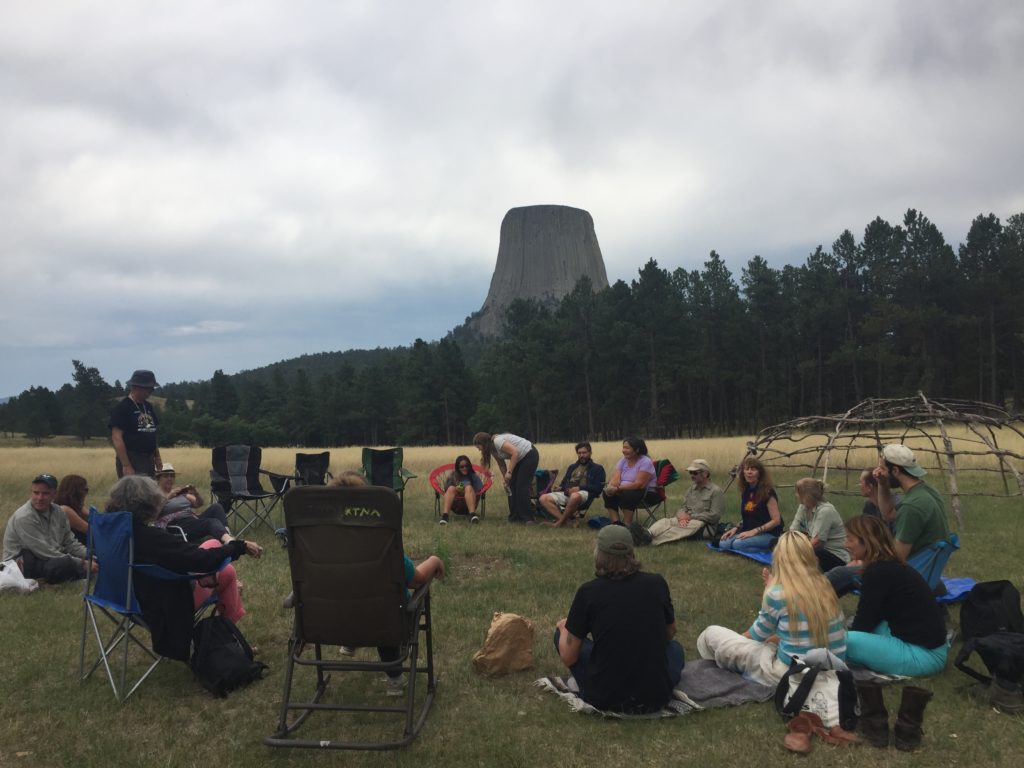
Each day we sat in a large circle and began and ended our meetings by smudging with sage smoke, offering tobacco, and listening to Lakota songs and prayers. Listening deeply and bearing witness to the grief of others tends to be hard, hard practice, and it’s informative to watch the ways we typically avoid doing this– by getting lost in our own grief, by getting distracted, by trying to fix the problem then and there, by laughing it off, by getting angry, or notice and name the special way way that you’ve perfected. But if we’re able, more or less, to stay with the grief, what happens is that a tremendous feeling of connection arises and the sense of self and other drops off. The result is often a powerful and surprising feeling of joy. Actually, Peter described this in his last book, In Paradise, about the Auschwitz retreats.
Healing
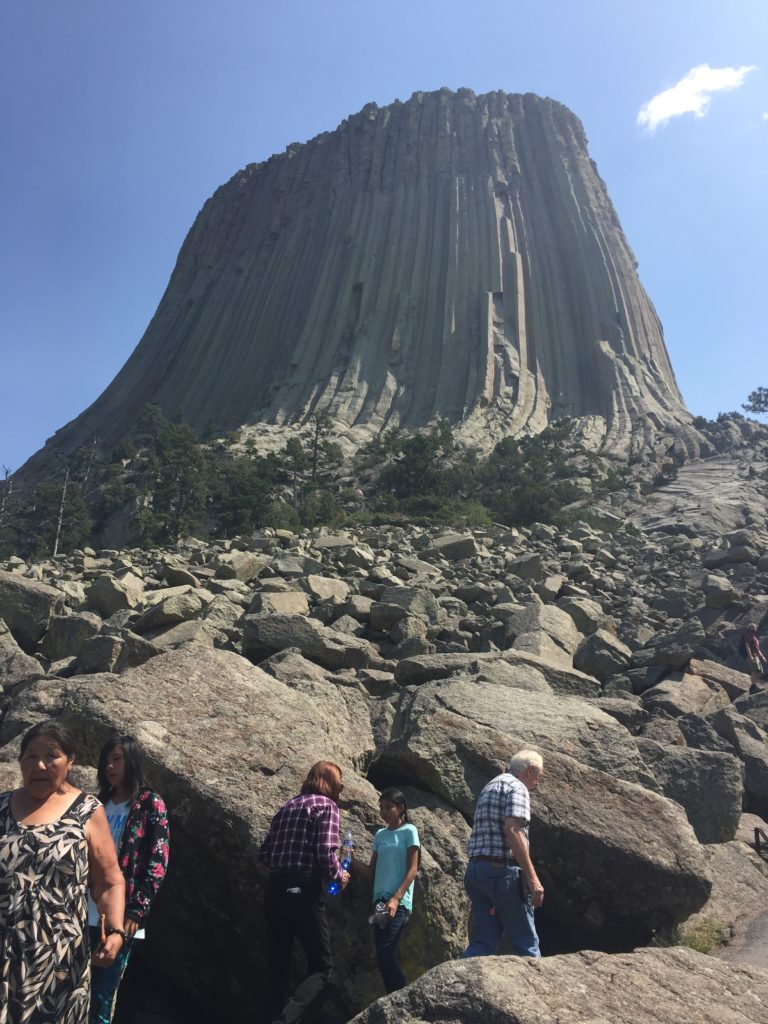
The next day we drove through very beautiful country to Grey Horn Butte, or Devil’s Tower, in northeastern Wyoming. It’s a laccolithic butte composed of igneous rock in the Bear Lodge Mountains (part of the Black Hills) near Hulett and Sundance. Violet described how the area was traditionally used for Inipi– sweat lodges and vision quests. We set up at a site that was used for Inipi and prayed and listened to stories. Watching Violet walk around the area was special. I’ve very rarely seen someone so connected to a place. She was in constant conversation with the land, the plants and animals, with the trees, and with the clouds, sky, and stars. Traditional Lakota culture is all about relations, and relationships. Mitakuye Oyasin– “all my relations,” or “we are all related.”
A word of warning about the appropriation of tribal terms: though we think of it as respectful and flattering, the expressions are often taken out of context and appropriation is a favorite tool of colonialism. We saw a lot of this at Standing Rock. I do not yet understand enough about the Lakota to casually use their language. I respect and admire so much about the Lakota, and find lots of resonance with aspects of Zen forms, but I think it would be disrespectful, not to mention impossible, to try and become a Lakota without living through all that they have lived through.
Relationship is one of the important values coming from the the extended family, the band or tribe. It includes the ideas of living in harmony, belonging, that relations are the true wealth, and of the importance of trusting in others. It is one of the values that made the tribal society work.
As a group, we’d moved during those first days at Little Big Horn into a feeling of connection through the process of listening in council to our hosts’ grief, and to some degree one another’s grief. Through listening to stories about our relationships to each other, and the land, plants, animals, and stars, the feeling of connection was heightened. It was powerful. The feeling was reinforced by the stories we heard at Grey Horn Butte. On our second day there we walked around the base of the butte, stopping and listening to more stories and memories of the place. Later, back at the sweat lodge site, Violet taught us how to tie tobacco pouches together while praying for our loved ones. Then Manny walked into the woods and chose a tree to tie them on. He chose a plum tree, which was amazing because our lineage is called the white plum lineage, and Bernie Glassman who founded the Zen Peacemakers and the bearing witness process– one of his Buddhist names is Baisen which means chosen plum. In some ways, a circle felt completed.
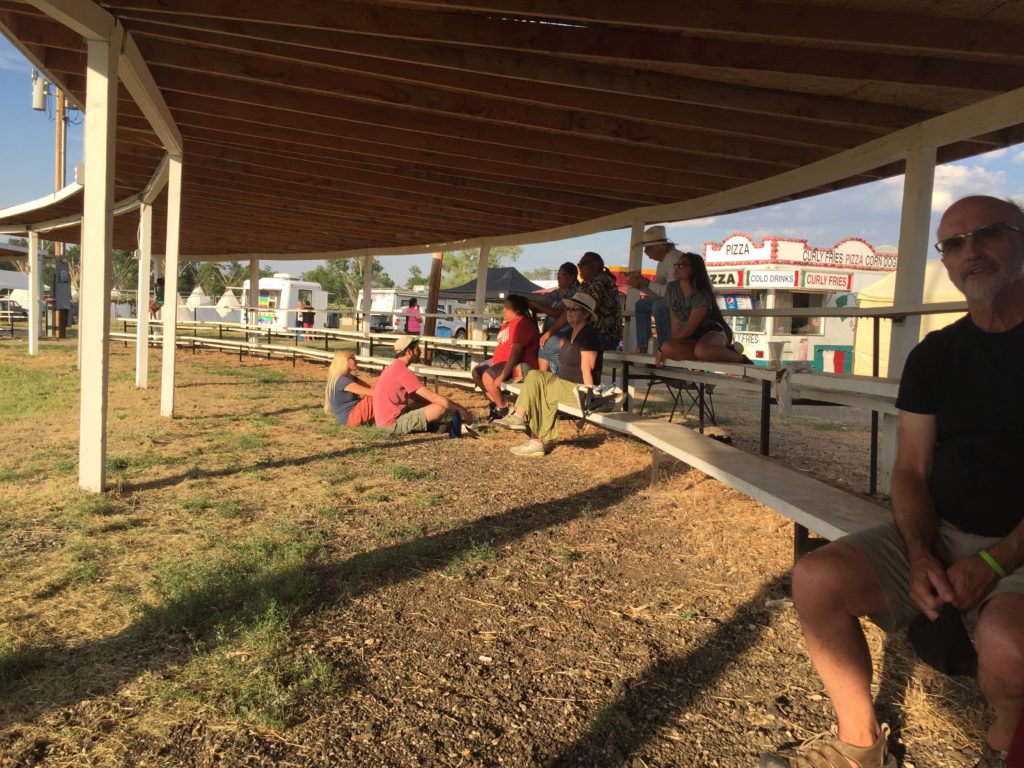
Taking Action
What can we do to help? To me, it seems that the solutions have to come from within the community. We can offer our support to individuals or groups that seem to be doing that work. Genro has been raising money to buy heating fuel for folks on the Pine Ridge reservation for the past few years. It’s not a big non-profit with infrastructure that takes half your money to support– it just goes directly to a guy who pays for and distributes the oil. You can reach him at ggauntt@gmail.com[/vc_column_text][/vc_column][/vc_row][vc_row][vc_column][vc_column_text]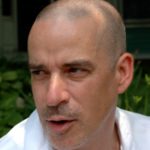 Michel Engu Dobbs is a Zen priest and Dharma heir of Peter Muryo Matthiessen-roshi and a co-teacher at Ocean Zendo in Bridgehampton New York, an affiliate of Zen Peacemakers International. Engu has been a bakery manager for over twenty years and is a husband and father of three.[/vc_column_text][/vc_column][/vc_row]
Michel Engu Dobbs is a Zen priest and Dharma heir of Peter Muryo Matthiessen-roshi and a co-teacher at Ocean Zendo in Bridgehampton New York, an affiliate of Zen Peacemakers International. Engu has been a bakery manager for over twenty years and is a husband and father of three.[/vc_column_text][/vc_column][/vc_row]

